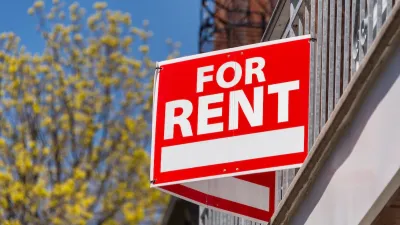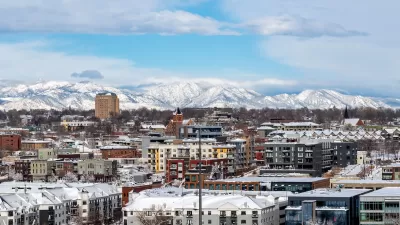As of 2010, the U.S. had a shortfall of 5.1 million housing units affordable to low-income renters. As the demand for such housing increases, preserving affordable units that exist is a much more cost effective solution than constructing new ones.
In a new report, the U.S. Department of Housing and Urban Development (HUD) outlines the growing need, current threats, and innovative solutions for preserving the country's shrinking supple of affordable rental housing.
"Preserving existing affordable rental housing offers many advantages over new construction," writes HUD. "The nation's stock of government-subsidized affordable rentals represents a taxpayer-funded investment worth billions of dollars. The cost of constructing new subsidized and privately owned affordable rental housing from the ground up, says Enterprise Community Partners' Lydia Tom, would be staggering. By contrast, preservation typically costs about one-half to two-thirds as much as new construction. Preservation also enables people to stay in their homes and neighborhoods, where they can enjoy the social capital they have built within their communities."
So what programs are most effective at preserving this shrinking resource? HUD looks at federal solutions (such as the Mark-to-Market program and the Rental Assistance Demonstration pilot program) and local solutions (in cities such as Denver, San Diego, and New York) that have proven successful.
FULL STORY: Preserving Affordable Rental Housing: A Snapshot of Growing Need, Current Threats, and Innovative Solutions

Maui's Vacation Rental Debate Turns Ugly
Verbal attacks, misinformation campaigns and fistfights plague a high-stakes debate to convert thousands of vacation rentals into long-term housing.

Planetizen Federal Action Tracker
A weekly monitor of how Trump’s orders and actions are impacting planners and planning in America.

San Francisco Suspends Traffic Calming Amidst Record Deaths
Citing “a challenging fiscal landscape,” the city will cease the program on the heels of 42 traffic deaths, including 24 pedestrians.

Defunct Pittsburgh Power Plant to Become Residential Tower
A decommissioned steam heat plant will be redeveloped into almost 100 affordable housing units.

Trump Prompts Restructuring of Transportation Research Board in “Unprecedented Overreach”
The TRB has eliminated more than half of its committees including those focused on climate, equity, and cities.

Amtrak Rolls Out New Orleans to Alabama “Mardi Gras” Train
The new service will operate morning and evening departures between Mobile and New Orleans.
Urban Design for Planners 1: Software Tools
This six-course series explores essential urban design concepts using open source software and equips planners with the tools they need to participate fully in the urban design process.
Planning for Universal Design
Learn the tools for implementing Universal Design in planning regulations.
Heyer Gruel & Associates PA
JM Goldson LLC
Custer County Colorado
City of Camden Redevelopment Agency
City of Astoria
Transportation Research & Education Center (TREC) at Portland State University
Jefferson Parish Government
Camden Redevelopment Agency
City of Claremont





























